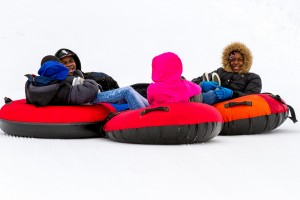 We have 20 ziplines, 6 waterslides, three climbing walls, an archery range, and the capacity to make, groom and guarantee snow all winter long on our tubing hill. But, why? Why do we invest so much time, energy and money in activities?
We have 20 ziplines, 6 waterslides, three climbing walls, an archery range, and the capacity to make, groom and guarantee snow all winter long on our tubing hill. But, why? Why do we invest so much time, energy and money in activities?
They help us reach more kids.
I know many in youth ministry and the church have moved away from the attractional models, of planning fun events to draw kids in, then sharing the Gospel with them. I get their concerns. But I’m still OK with it. We really are constantly “thinking about the lost and how to reach them.” It’s part of our fabric.
We know from conversations with the youth leaders we work with that many of them use their weekend retreat at SpringHill as a gateway to their ministries. Their regular students are able to get friends from school—friends who wouldn’t otherwise come to their church—to come to camp. They’re excited about tubing, climbing, and our waterslides. And they come.
But those kids that come know what to expect. They know that those activities exist within the context of the relationships they have with other kids, a Christian program, and a bus ride with 40 other church kids. And they still come.
Recently, a youth pastor told us about 3 high school guys who came to our retreat because they thought it would be fun. They kept reminding him that they were atheists, that they weren’t going to give up their lives of sin, and that they weren’t interested in church stuff.
But, it turns out, God had other plans. He spoke to them, all three of them, through our speaker Brock Morgan. His illustrations and application of biblical truth cut through their hard hearts. All three of them made first-time commitments to Christ that weekend …and, they had a blast at camp.
(By the way, for a great read about doing attractional youth ministry, see Geoff Stewart’s guest blog on morethandodgeball.com.)
They become the context for relationships.
The activities we have at camp are intentionally designed to foster relationships between campers, and between them and their adult leaders. Our ziplines, for example, aren’t single lines. They are 6 or 8 lines together—the same size as our small groups and cabin group sizes.
We allow kids and leaders to go down our tubing hill in clusters, so that even during their 20-second ride down the hill they are having a shared experience. We’re not afraid of them waiting in short lines, which is often where they talk about what they’re learning.
Even our individual activities, like our solo challenge and flying squirrel, require the support of a team to accomplish. Other kids will assist our staff as backup belayers, or be the ones to pull the rope and launch their friend into the air. In doing this, they all stay engaged and learn to depend on one-another.
They provide the opportunity for kids to overcome challenges.
We know that kids face challenges every day. We do too. But camp activities provide a safe context for them to face and overcome challenges. They’re not the same challenges, but these experiences build character and resolve. They add confidence. And they teach them to trust others.
They give us the chance to process spiritual truth.
During summer camp and many of our retreats, our staff takes time during each activity block to sit down with campers and talk about what they just experienced. The facilitator guides them through a process of interpreting the experience and transferring the truth to everyday life.
It’s an important, and effective way to weave the truth of scripture into life experience. Though the experiences they will face outside of camp are typically very different, we know that this practice of looking for the lesson in experiences, will stick with them.
You may not have 20 ziplines at your church or camp, but you can be intentional about how you use what you have. And the truth is, we’re not doing activities just for the sake of activity. We see them as an integral part of the SpringHill experience: a part that challenges, teaches, and encourages relational connectedness.
How are you using creative, fun activities to reach kids in your community?